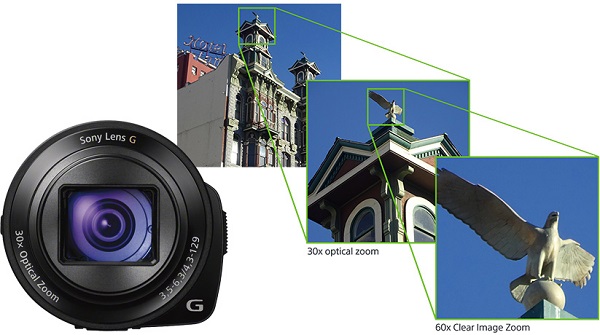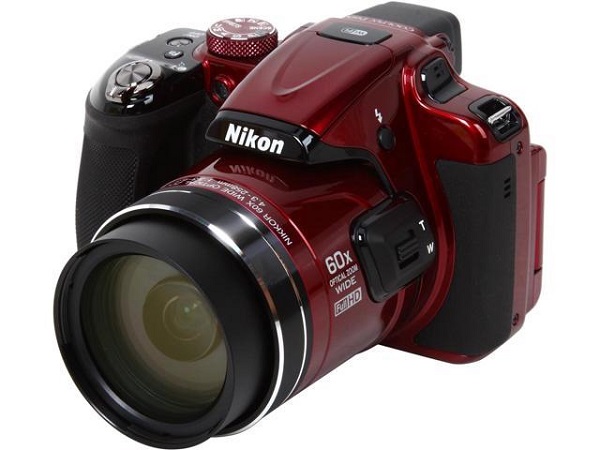The main indicators of the camera lens
Most modern cameras have built-in automatic modes that allow you to make high-quality images. At the same time, none of them will provide an opportunity to create a truly unique photo. For these purposes, the photographer will have to take control of the settings in their own hands, including understanding what aperture and other lens parameters are.
Content
The concept of aperture
The diaphragm is a lens design made of semicircular spherescalled petals. With their help, the flow of light to the matrix is regulated.After the user presses the shutter button, the diaphragm forms a diameter set by the user, which will miss the right amount of light. The aperture is indicated on the lens by the letter f.
Marking on the lens can be from f / 1.2 to f / 32. The smaller the aperture value, the wider the petals will be opened, and the greater the amount of light falling on the photosensitive element.

How the diaphragm affects the image
The aperture of the camera primarily affects photo brightness. Obviously, the wider the petals are open, the more light falls on the matrix. The second point, and many believe that it is more important in the work of the diaphragm - this depth of field. The wider the aperture is open, the more blurred the background will be, and vice versa, a small window for light will give a clearer picture. The depth of field of the imaged space (DOF) is a very important concept in the theory of photography, and it is directly affected by the lens aperture.
Thus, the larger the range of the f-number in the camera, the more room for creativity it provides. Lenses with a wide aperture range are more expensive and larger.

How to choose the right aperture value
At first glance, the principle of working with aperture values is clear. A wide open aperture gives a brighter picture, but with a blurred background and vice versa. But there is a small problem. There are two concepts - diffraction and aberration. The general meaning of these concepts lies in the distortion of light and, accordingly, the noise in the photo. They appear at the limiting values of the aperture.
To avoid such troubles when shooting, it is recommended to choose the best option of the aperture value, which minimizes noise. You can do this as follows. At each aperture value, focusing is done on the same subject. Variants of the aperture value with the fewest errors are taken as the basis during the shooting. Usually it is 2-3 values less than the limit options. In some cases, extreme values have to be used, for example, when a lot of light is needed on a photo or the maximum clarity of objects.
Diaphragm in the smartphone
Modern smartphones have cameras that recently allow you to get very high-quality images. Some devices can see after the number of pixels mysterious characters f / 1.4, f / 2/0 and others. Smartphones have this value called aperture. Mobile device manufacturers sometimes shorten spelling and simply write f2 or f1.4. This concept implies the size of the opening of the camera and works by analogy with the diaphragm. It is logical that the diaphragm of the rear camera will give the best shots in the case when the value of the aperture is wide enough. For a camera with an aperture of f / 2.0 shooting indoors is not a problem, and the photos here often reach the level of compact cameras.
Focal length
The lens of the camera is a few lenses. With the passage of light rays through them refraction occurs, after which they all converge at a certain point from the back of the lens. This point is called focus or focus point, and the distance from this point to the lens is called the focal length.
What does the focal length affect
First of all, this parameter affects what fits in the frame.The smaller the value, the wider the viewing angle is obtained, but at the same time the perspective is distorted. High focal length, among other things, gives background blur.
On a note! It is believed that the focal length of the human eye has a parameter of 50 mm.
On this basis, several types of lenses are distinguished by the size of the focal length.
- Super wide-angle from 7 to 24 mm. Used to take photos with the highest possible viewing angle. 14 mm lens is the most popular for shooting landscapes. Blur the background with such a lens is almost impossible.
- Wide-angle - from 24 to 35 mm. The lens has a smaller blurring outlook compared to the previous one, but the viewing angle here is smaller. It is used for shooting on the streets of the city, group porter photos and sometimes for landscapes.
- Standard - from 35-85 mm. Suitable for shooting a person in full growth, landscape, and for most ordinary photographs without a plot. You can not shoot portraits, because the lens distorts the proportions of the face
- Telephoto lenses - from 85 mm. There are almost no distortions from 85 to 135 mm, this is the best option for portraits. After 135 the space is compressed, which is also not suitable for shooting a face.Telephoto lenses are suitable for shooting objects that are difficult to approach. It can sport events, wild animals and other objects.
As a rule, a lens with a focal length of 18 to 55 mm is sold with the camera. Such lenses allow you to take a variety of photos. In fact, this is a universal option.
How to set focus
In order to adjust the focus, first of all you need to understand what the photographer wants to see in the picture. Based on this, you should set specific values on the lens. To get the main subject clear and the background blurry, you should choose a small focal length, for example, for a lens 18-55 closer to 18. If you need to get a clear foreground and perspective on the photo, then the principle will be reversed, respectively.
After that, in the viewfinder you need to find the desired point and focus on it. This function is in most modern cameras. Depending on the manufacturer and model, focus points maybe a lot. The camera captures not only the main object, but also the closest one.
Focus Modes
Most SLR cameras have several focusing modes that are used for different purposes.In the focus settings there are symbols S, AF, MF. Consider how they are decrypted.
- "AF-S" - Auto Focus Singlethat can be translated into Russian as "single afthofocus." Its essence lies in the fact that when you press the shutter button halfway, the lens sharpens and stops when it receives a successful version.
- "AF-C" - Auto Focus Continuousthat can be interpreted as a long autofocus. In this case, when the button is pressed halfway, the camera continues to follow the focus, even if at this point the composition changes or the objects move.
- "AF-A" - Auto Focus Automaticautomatic autofocus. The camera itself chooses one of the two previous modes, many beginners take pictures on it and are unaware of the existence of other options.
- "MF" - Manual Focusing, manual focus, a necessary option for advanced photographers. Here focusing is done by rotating the ring on the lens.
Manual focus is in models that do not have a motor for focusing. It turns on from the camera menu. Often the camera does not exactly focus on the object, it can only be corrected in manual mode.
Obviously, it is impossible to choose the correct focal length in the lens, as it will be different for different types of shooting.
What is zoom
Zoom is an integral characteristic of each lens, which is directly related to the focal length. In order to get the value of the zoom for a specific lens, you need to take the range of focal lengths, and divide the larger by a smaller one. For example, for a lens 18-55 zoom is 3. This value describes how many times the object can be enlarged.
The zoom in the camera can be divided into two types:
- optic;
- digital.
Optical zoom
This concept is most commonly used. for mirror devices with interchangeable lenses. In this case, in order to increase or decrease the object, it is necessary to “hand” move the lenses in the lens, while all the other set values do not change at all. Thus, the optical zoom does not affect the final photo.

Digital zoom
The digital zoom of the camera is not due to the displacement of the lenses, but using the processor. If it is easy to talk about this procedure, then the processor cuts out the desired piece of the image and simply stretches the entire matrix. Obviously, with this approach, the image quality deteriorates significantly.Digital zoom reminds work in the paint program when the picture is enlarged, but at the same time its quality deteriorates so much that it is already impossible to understand anything on it.

Ultrasounds are a type of compact camera that has very high optical approximation values. Currently, with such devices, the increase can reach 60x - this is the largest zoom in the camera. One example of such a device is the Nikon Coolpix P600 model with a focal length of 4.3-258, that is, an increase of 60x.

Conclusion
Buying a new lens is a natural step of a person who is involved in photography, even at a semi-professional level. When choosing it, you should not only see the characteristics and description, but ideally try how it will work on a particular camera. Given the characteristics of a particular model, the same lens can produce different results with different cameras.


/rating_off.png)











